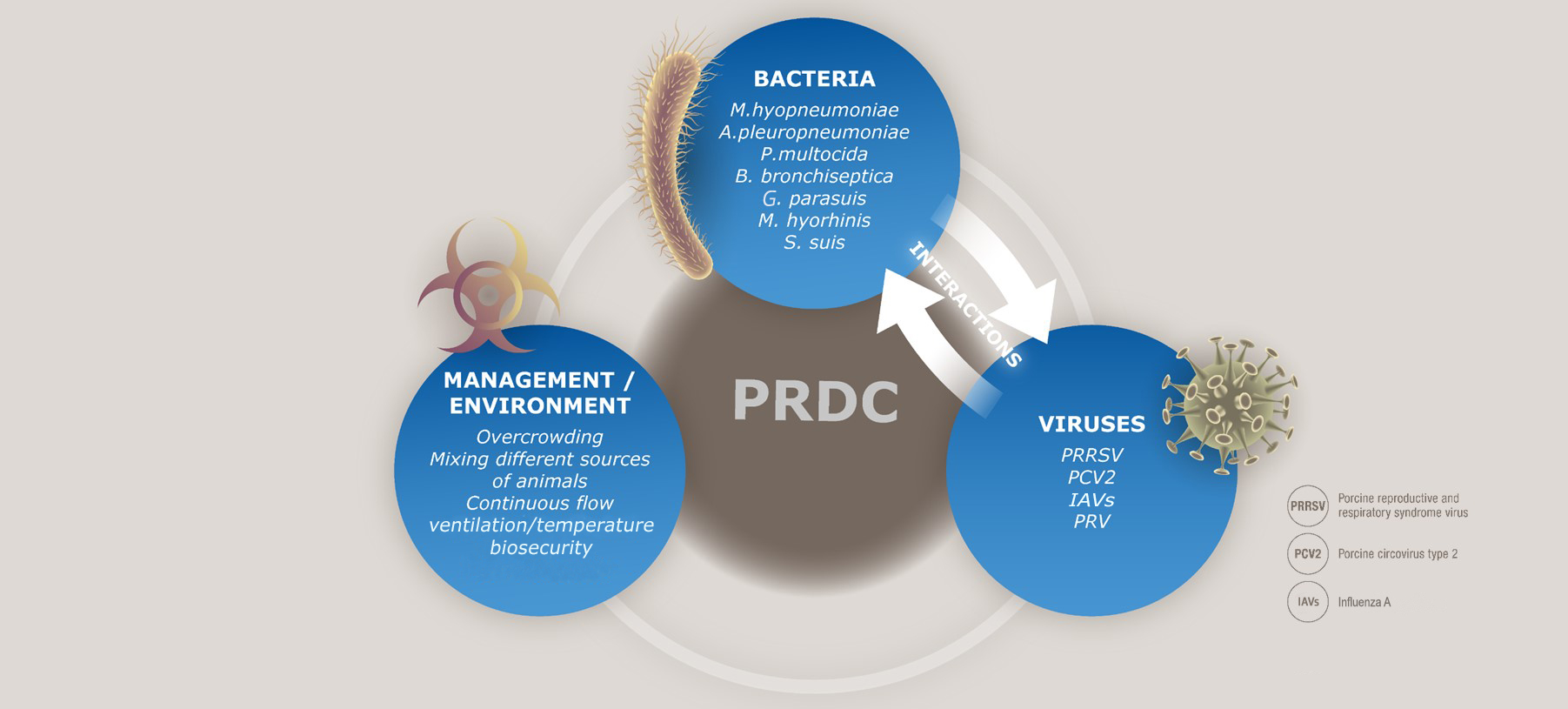
What is Swine Respiratory Disease
 Respiratory disease in pigs is often multifactorial in nature. Pneumonia-causing bacteria commonly reside in the upper respiratory tract of normal pigs. These bacteria can either cause disease on their own, known as primary disease causing bacteria, or be opportunistic, otherwise known as secondary bacteria. Opportunistic bacteria need a disruption of the normal immune system function to be able to cause disease, which is often the case in swine respiratory disease. The disease becomes more serious when there are concurrent infections with multiple agents1.
Respiratory disease in pigs is often multifactorial in nature. Pneumonia-causing bacteria commonly reside in the upper respiratory tract of normal pigs. These bacteria can either cause disease on their own, known as primary disease causing bacteria, or be opportunistic, otherwise known as secondary bacteria. Opportunistic bacteria need a disruption of the normal immune system function to be able to cause disease, which is often the case in swine respiratory disease. The disease becomes more serious when there are concurrent infections with multiple agents1.
Respiratory disease due to bacteria alone is known as Swine Respiratory Disease (SRD), but when viruses are involved the term Porcine Respiratory Disease Complex (PRDC) is used to highlight the complexity of events that take place in the development of pneumonia2. PRDC has a huge impact not only by increasing morbidity and mortality, but by also increasing diagnostic, prevention and treatment costs. One study found that PRDC cost up to $10.41 per pig3.

